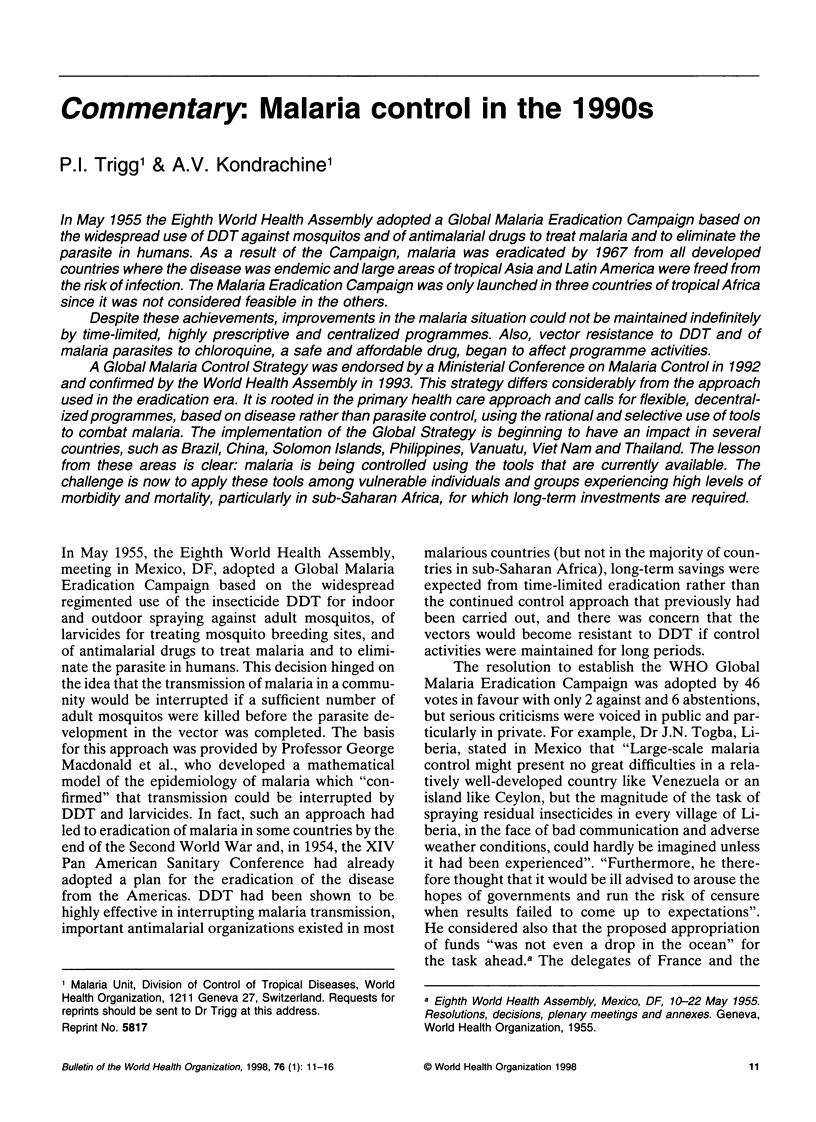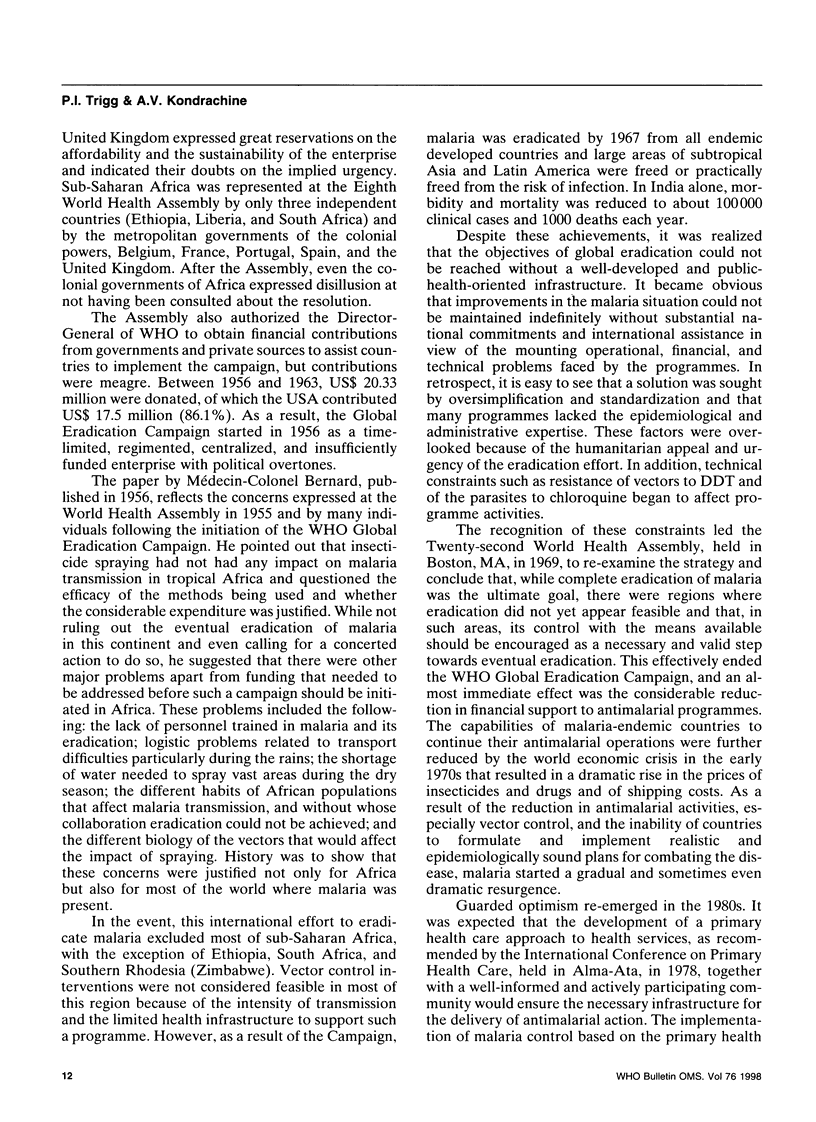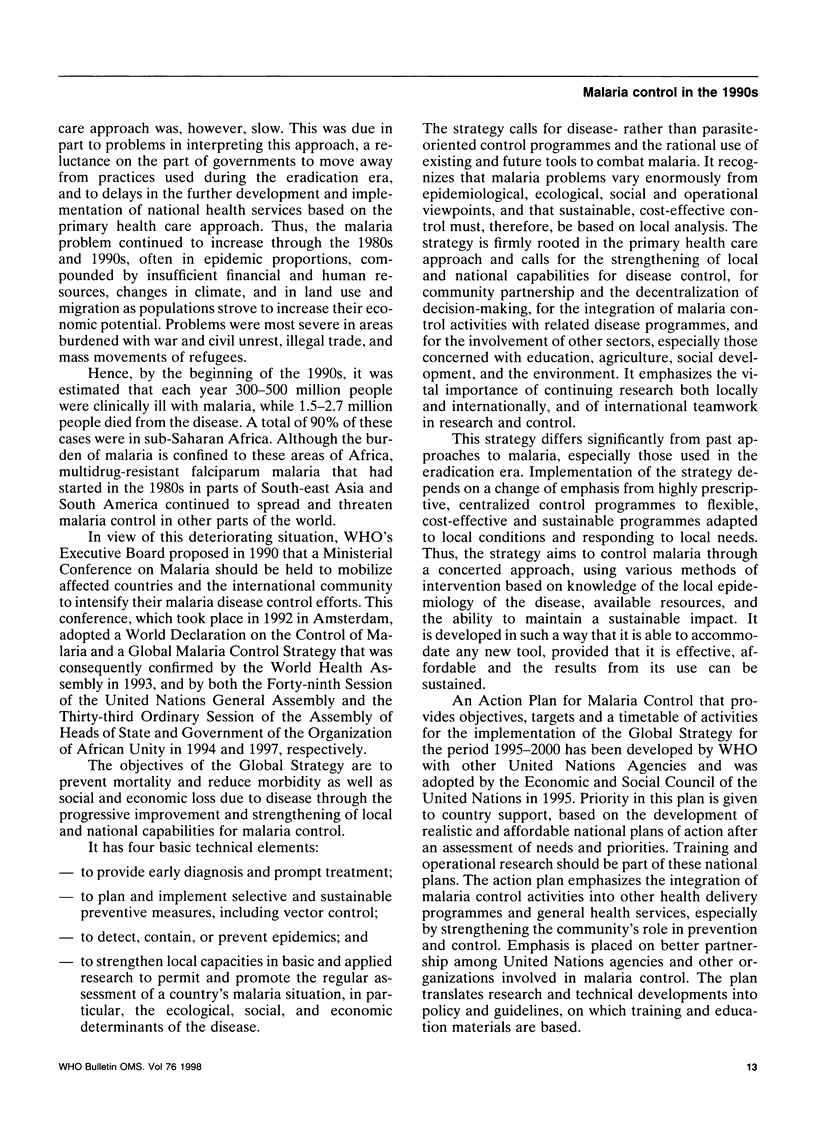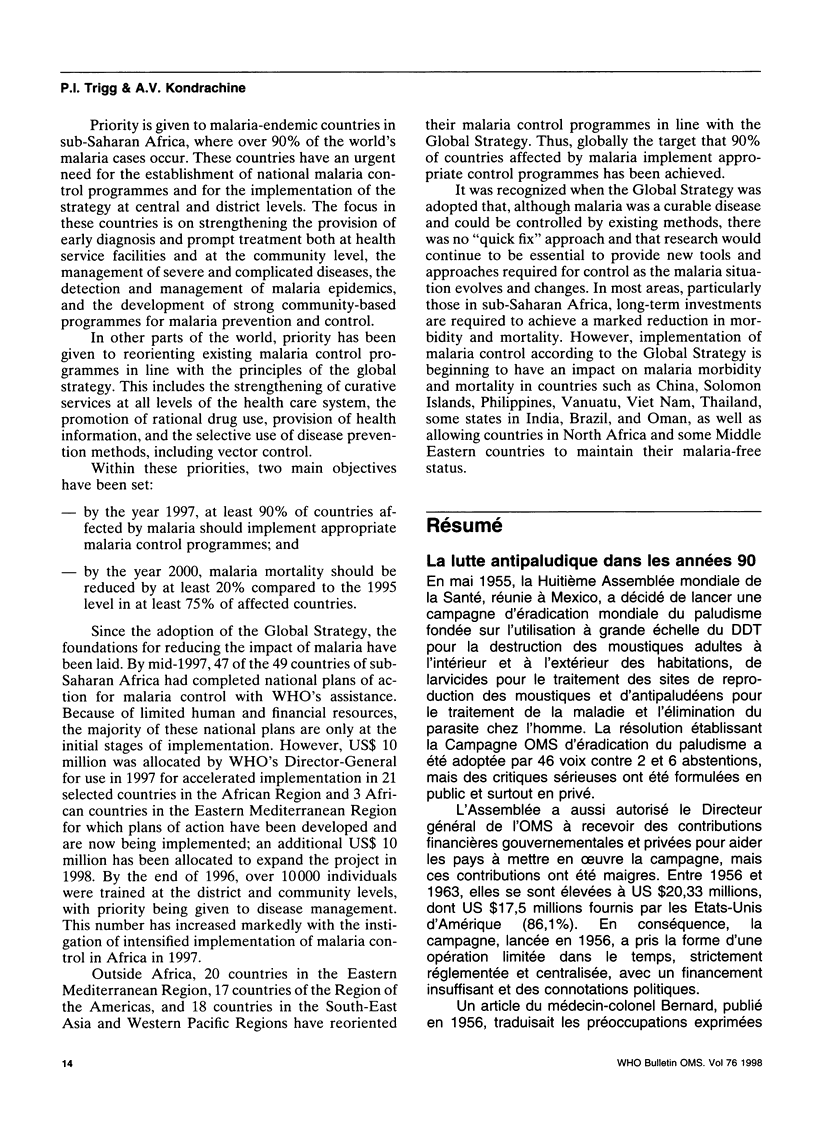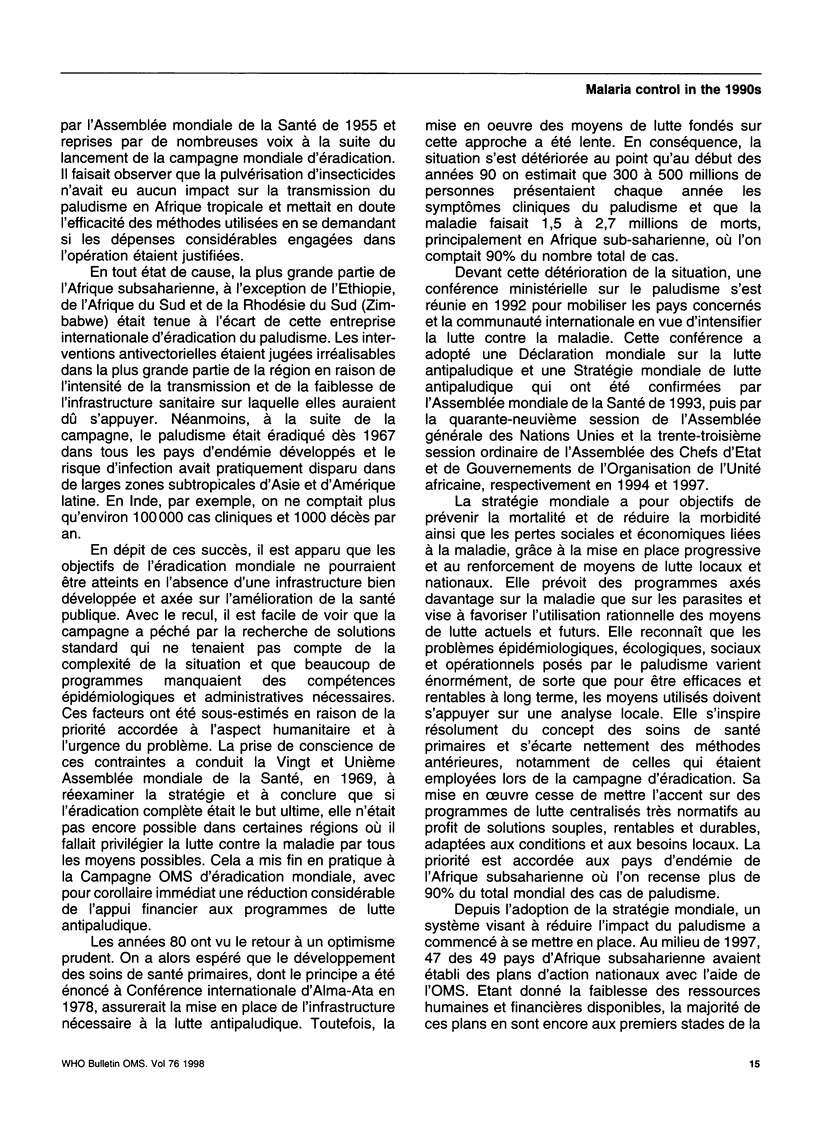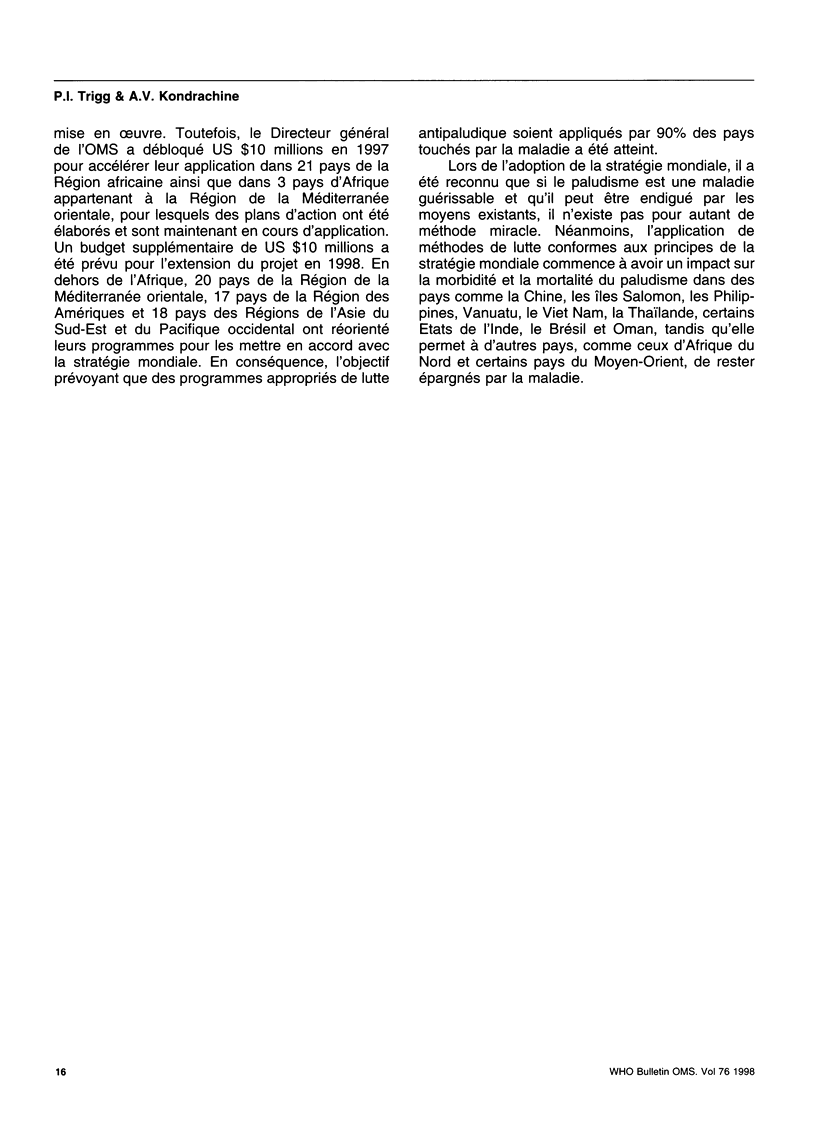Abstract
In May 1955 the Eighth World Health Assembly adopted a Global Malaria Eradication Campaign based on the widespread use of DDT against mosquitos and of antimalarial drugs to treat malaria and to eliminate the parasite in humans. As a result of the Campaign, malaria was eradicated by 1967 from all developed countries where the disease was endemic and large areas of tropical Asia and Latin America were freed from the risk of infection. The Malaria Eradication Campaign was only launched in three countries of tropical Africa since it was not considered feasible in the others. Despite these achievements, improvements in the malaria situation could not be maintained indefinitely by time-limited, highly prescriptive and centralized programmes. Also, vector resistance to DDT and of malaria parasites to chloroquine, a safe and affordable drug, began to affect programme activities. A global Malaria Control Strategy was endorsed by a Ministerial Conference on Malaria Control in 1992 and confirmed by the World Health Assembly in 1993. This strategy differs considerably from the approach used in the eradication era. It is rooted in the primary health care approach and calls for flexible, decentralized programmes, based on disease rather than parasite control, using the rational and selective use of tools to combat malaria. The implementation of the Global Strategy is beginning to have an impact in several countries, such as Brazil, China, Solomon Islands, Philippines, Vanuatu, Viet Nam and Thailand. The lesson from these areas is clear: malaria is being controlled using the tools that are currently available. The challenge is now to apply these tools among vulnerable individuals and groups experiencing high levels of morbidity and mortality, particularly in sub-Saharan Africa, for which long-term investments are required.
Full text
PDF